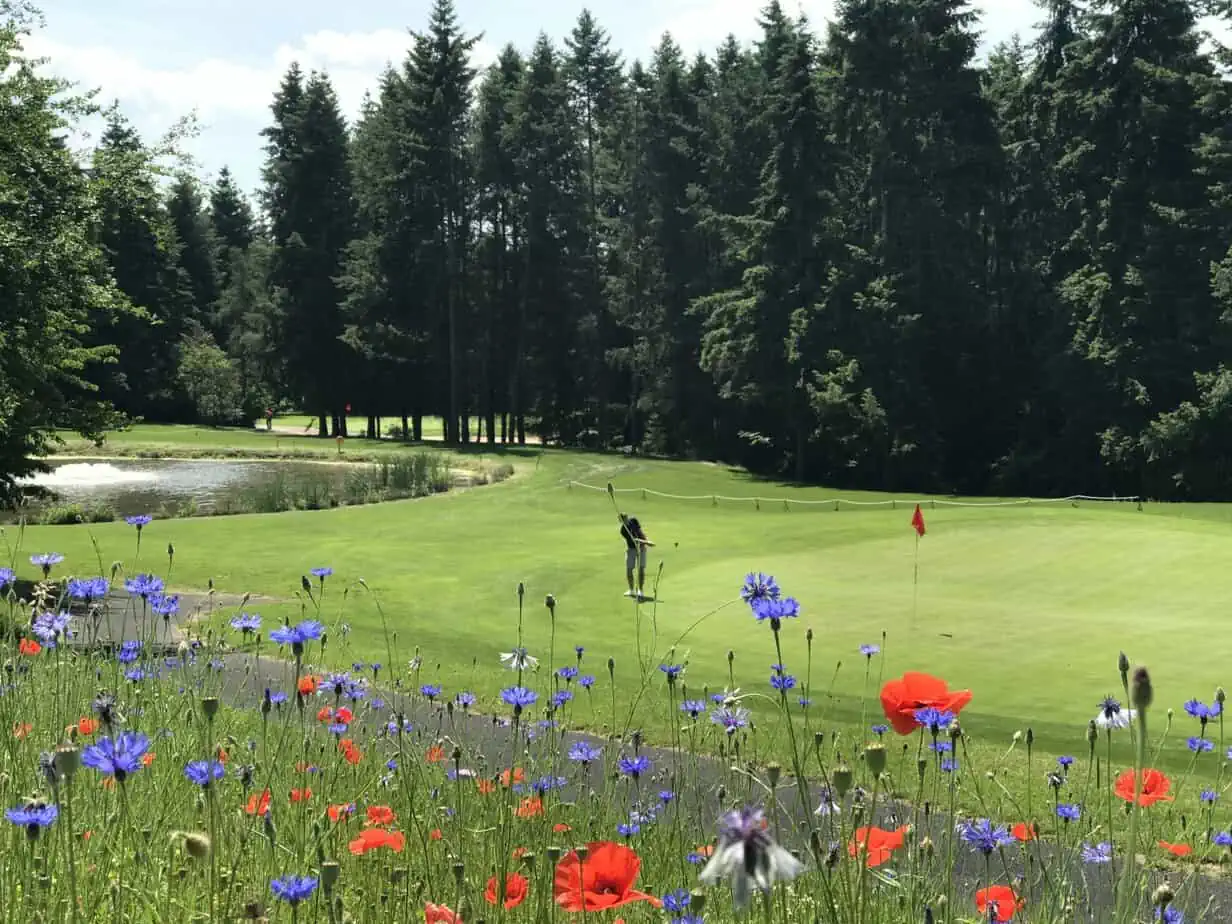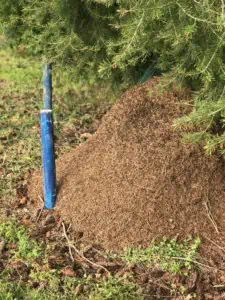Attighof golf course: monoculture becomes habitat
Promoting biodiversity – for the operators of the Attighof golf course, this has a lot to do with attention to detail. Anyone who hears Edith and Günther Bachor, the owners of the 18-hole course in Hochtaunus in Germany, talk about the history of the golf course realizes that dealing with nature has always been part of the history. Over 90,000 bushes and trees have been planted on the 82-hectare golf course over the years. The terrain has never been easy to manage. It is relatively hilly through the quiet landscape, which fascinates with its silence. Frankfurt, actually only three quarters of an hour away, feels far away. Whoever arrives here to play golf will first experience pure nature.
Diverse projects for biodiversity
“In the meantime, however, we place a lot of emphasis on signage for the various natural areas,” explains club manager Daniel Deutschmann, pointing to the notices that indicate deadwood piles, flowering meadows and special locations. “It’s our way of explaining to golfers the details of what we do here.” In fact, at Attighof Golf Club, which also participates in the Hessian Golf Association’s Golf Course Habitat project, this is quite a lot: seven bee colonies have a home on the golf course. A beekeeper from the region takes care of the subject, the honey has long had its fans. Numerous scattered fruit trees enrich the picture. An insect hotel impressively points out the topic of biodiversity, but the greenkeeping team also keeps an eye on the ant hills on holes three and six. The endangered insects live here undisturbed, if only because a protective fence has been drawn around them.
Deadwood plays an important role in promoting biodiversity on the heavily wooded golf course. It has long been recognized here that dead tree trunks are readily used by wild bee species, various beetles, flies and mosquitoes. Tree sponges also inhabit the dead wood. If trees are attacked by the bark beetle, Attighof at least has a secondary use for them as a source of energy in the context of heating. “Fortunately, we use very little oil here,” sums up Günther Bachor, who also had a photovoltaic system installed on the driving range buildings when the topic of solar energy was not as popular as it is these days.
The right planting against drought
Over the years, his wife has always been involved with planting. Especially the numerous sloping positions on the layout were not always easy to design. “Yarrow has been quite useful here, especially on lane two,” she notes. “It gets by with extremely little water, and especially during last summer’s dry spell, that helped us a lot.” Like many other facilities in Hesse, the drought has also taken its toll on the Attighof golf course. While greens and tees could still be kept green, there was barely enough water for the fairways. This was not changed by the fact that groundwater was not used for irrigation alone, but that water was also collected via drainage systems at the parking lot, for example, and used for the golf course.
Green projects promote the image
Communicating the green projects at the golf course, the Bachor couple, as operators, hope, will also improve golf’s image with the authorities. The fact that monocultures have been turned into diverse habitats over the years is confirmed time and again by a biologist who regularly makes her rounds of the golf course and points out rare plants. Biodiversity, at any rate, has benefited from the golf course.









